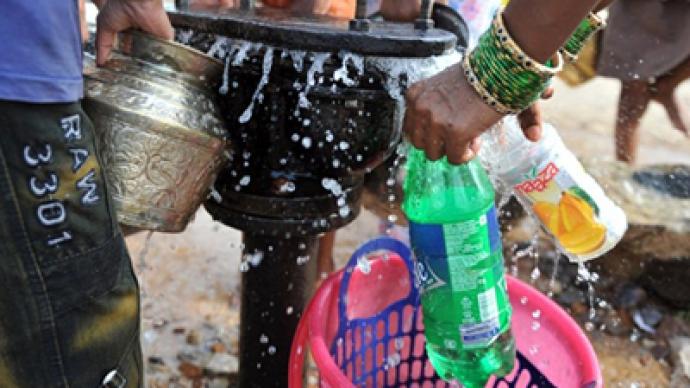The Indian government has announced a drop in the number of poor people in the country by massaging the criteria used to measure poverty. By its reckoning, less than a dollar a day is enough to get by – but the numbers don’t tell the whole story.
In India’s capital city, the sights and sounds of one of the world’s fastest-growing economies are everywhere. But intermingled with the new malls and shopping developments, slums are still home to about 40 million Indians.Many of the people who live in those slums, however, do not even count as being poor thanks to a new definition that has moved India’s poverty line to 32 rupees – or 60 US cents – per day. Ram Niwas works 12 hours, six days a week as a cobbler, and can make up to $US 2 per day. He sends most of his money back to his village to support the wife and three children he left behind. The fact that his country does not classify him as poor is shocking to him.“Putting 32 rupees as the benchmark to decide the poverty line is wrong because one cannot do anything with that amount,” he says. “If someone like me who makes Rs 3000 per months is finding it hard to survive here, how can someone who earns only Rs 32 survive?” Niwas asks.The people behind the new definition say that it is simply an adjustment based on the current economic climate.According to them, the new definition actually means that there are fewer people living in poverty in India than 20 years ago, when almost half of all Indians were living below the poverty line.They also claim it has no impact on who can access government welfare services.“Many people above the poverty line are also vulnerable. It’s not as if you got one rupee below the poverty line – you’re poor, and if you got one rupee more than the poverty line – you’re rich,” mocks Montek Singh Ahluwalia from India’s Planning Commission.“We have to do a lot for them and that is what our whole strategy is,” he explains.But new data also suggests those living in poverty should get by on the equivalent of two dollars per month for their health and education, sparking outrage across India.“So how do you feed your family, how do you look after your kids, where do you send them for education? How is that not close to the poverty line? Rs 30 per hour is already not good enough – forget about per day,” one woman told RT. “In a place like Delhi there is no way you can survive on that amount,” agrees another. Back at Ram Niwas’ workshop, it’s business as usual.“My only wish for my future is that I continue doing this work of mine without any hindrance from anyone or anything. As long as the government doesn’t interfere I will continue doing this business to feed and educate my kids,” he says. For now, Ram Niwas says, the debate over the poverty line is meaningless in his life. He just wants to be able to support his family.

